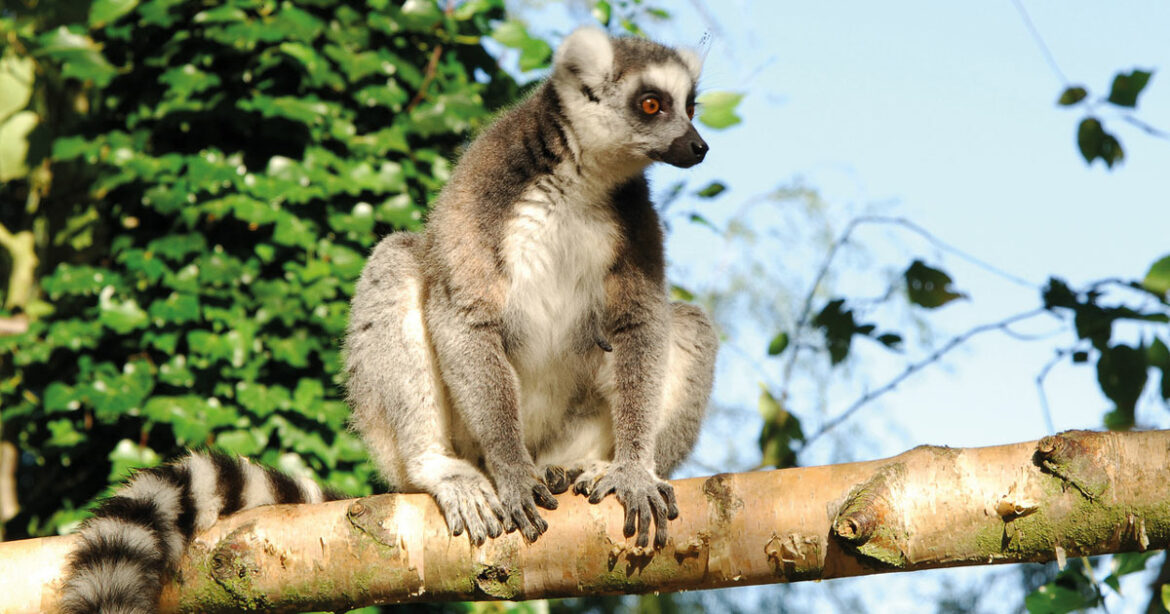Alex Fice pays a visit to Shepreth Wildlife Park and meets the residents, from the lemurs to the capybaras
The place where I first encountered wild animals, Shepreth Wildlife Park has held a special place in my heart since I was a young child. I still remember the exhilaration of spotting the tigers proudly prowling, and the thrill of coming face to face with a tarantula for the first time. With a new creature around every corner, it was – and still is – a place of absolute wonder.
I recently had the opportunity to revive these happy memories by taking part in Shepreth’s VIP animal experiences, which grant a glimpse into a day in the life of a zookeeper. Most involve a tasty treat for the animals – immediately getting you in their good books. Turns out, ring-tailed lemurs are more than happy to get up close and personal with humans, especially if you come wielding blueberries! I learnt this the minute I stepped foot onto Lemur Island, suddenly feeling a soft, springy thud on my right shoulder and a little hand steady itself on my head. Holly, the student keeper accompanying me, introduced him as Albus – the friendliest of the group – and informed me that my orange life jacket had marked me out as a treat-giver. I spent the next five minutes delivering a steady stream of blueberries to Albus and his daughter Dobby, as well as the other members of the lemur clan: Meg, the youngest; Peachy, Dobby’s mum; and Redback, the subordinate of the group. Holly warned me to watch myself with Mackie, the matriarch, who’s more than happy to prove her mettle, should the occasion arise. Once they’d filled up on sweet treats and steamed veg, the lemurs plonked themselves down for a sunbathe, (adorably) sitting with their arms sticking out. Having discovered I share a love of summer fruits and sunshine with lemurs, I stepped back onto the pontoon and journeyed to dry land.
Next, it was time to meet the capybaras – the largest living rodents in the world. Unlike the lemurs, capybaras aren’t endangered; in fact, they are found in such abundance in their native South America, they are considered vermin. Shepreth Wildlife Park chooses to look after them as they do well in captivity and are popular with visitors, attracting essential funds for conservation projects. I spent a pleasant half hour basking in the rays, as mum Jinx and dad Pascal tucked into bamboo leaves alongside two of their three children, Mani and Pepita.
After bidding farewell to the capybaras, I headed to the African Sands hut, home to leopard tortoises Dippy, Lulu, Little Man and Big Mama. As soon I was through the door, Little Man made a dash for us, with Lulu hot on his heels; a couple of minutes later and they’d made it, and were duly rewarded with a crunchy lettuce leaf. They share the space with three sulcata tortoises and two red-crested turacos, whose stunning green and red feathers are a marvel to behold.
Finally, I visited Shepreth’s resident aardvarks: Sefera, Elsie and Indie. I was warned that the sight of the termites we were bringing would likely be met by a burst of the ‘zoomies’, but instead we were greeted with sleeping beauties, curled up in balls to block out the lights we’d rudely switched on. Indie has been introduced to the two females, in the hope that they will breed; if successful, it will be the first time Shepreth welcomes aardvark babies, so watch this space!
While getting to meet the animals is a unique delight, the chance to learn more about the work of the park was also rewarding. The main criticism faced by zoos and wildlife parks is that it’s cruel to keep wild animals in captivity – but spending time at Shepreth with both animals and keepers reassured me that these animals are loved, respected and well looked-after. The park also plays a vital role in educating people about the importance of taking care of wildlife and the natural world – with the price of each ticket or VIP experience contributing to conservation projects around the world.
My day in the life of a keeper was an enjoyable and insightful one, that I will remember fondly for the rest of my life. To learn more about Shepreth Wildlife Park’s conservation work, and discover their worthwhile experiences, head to their website.

